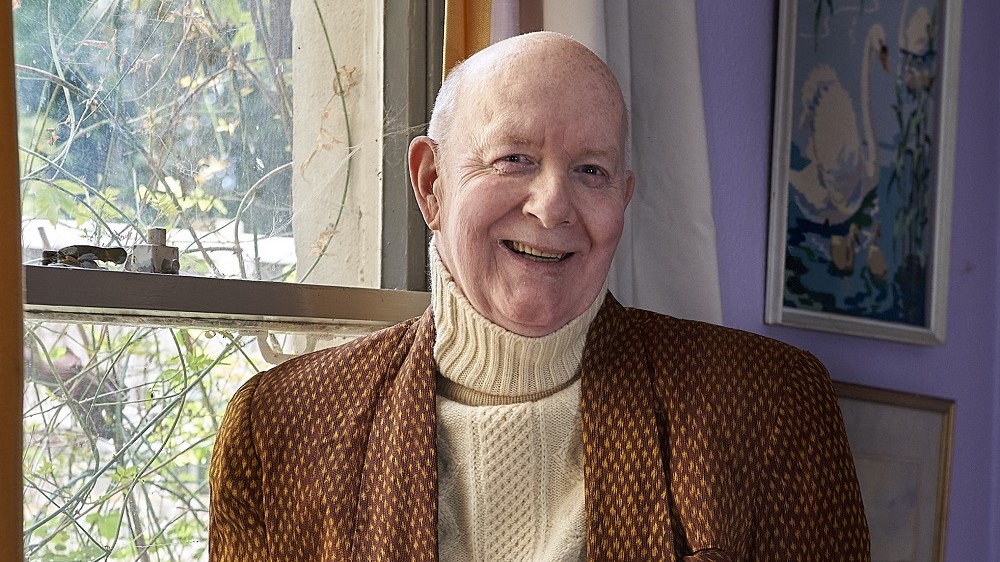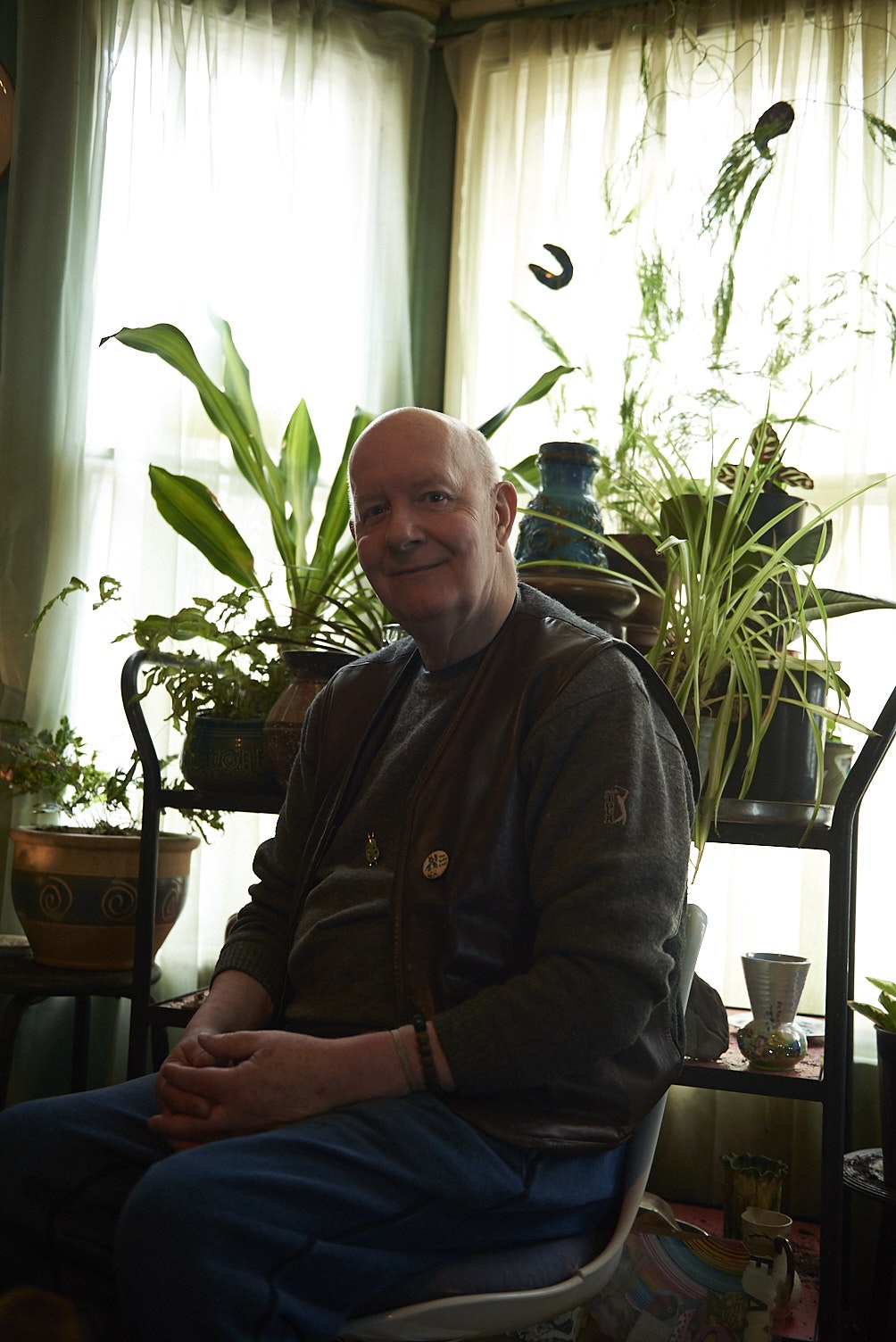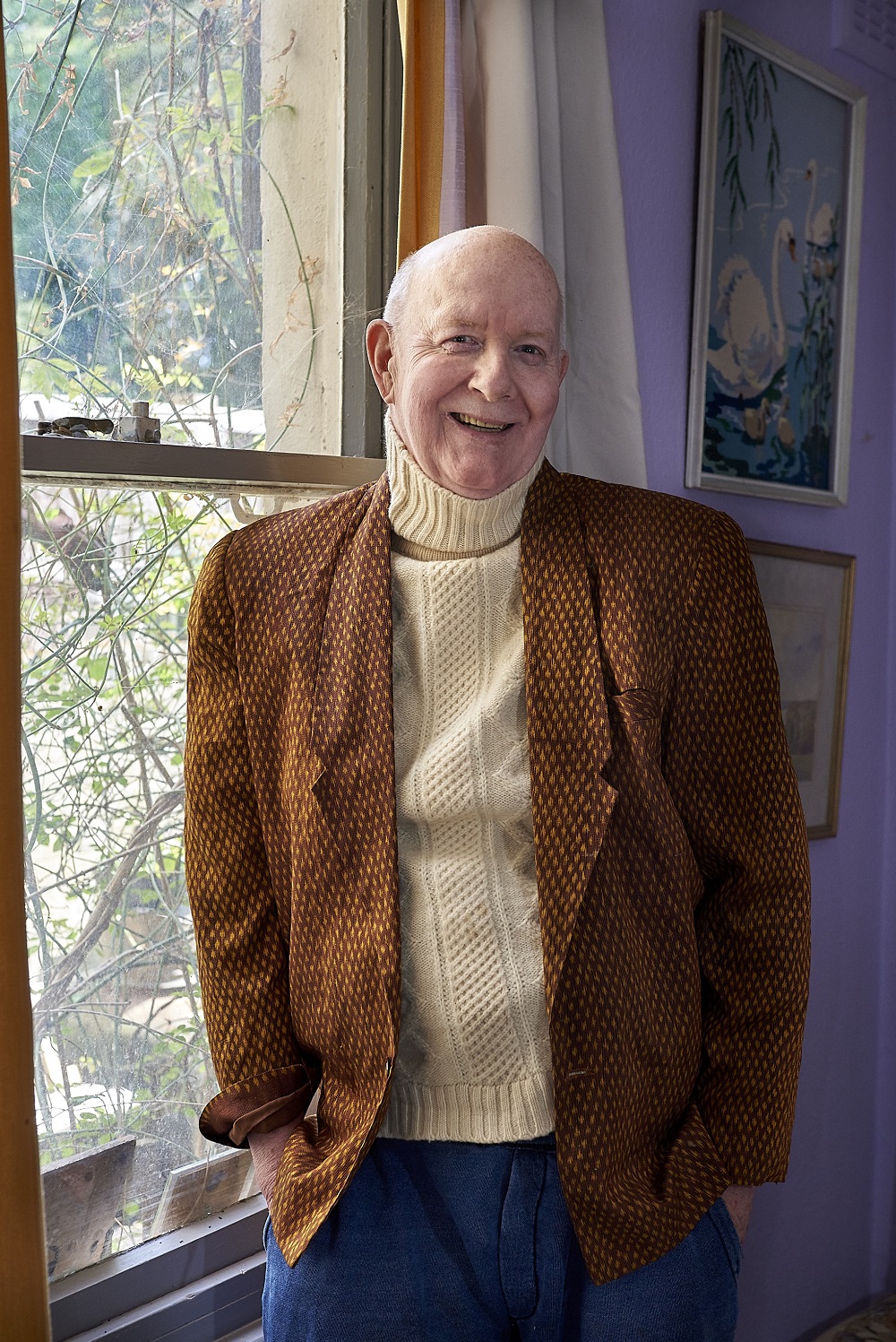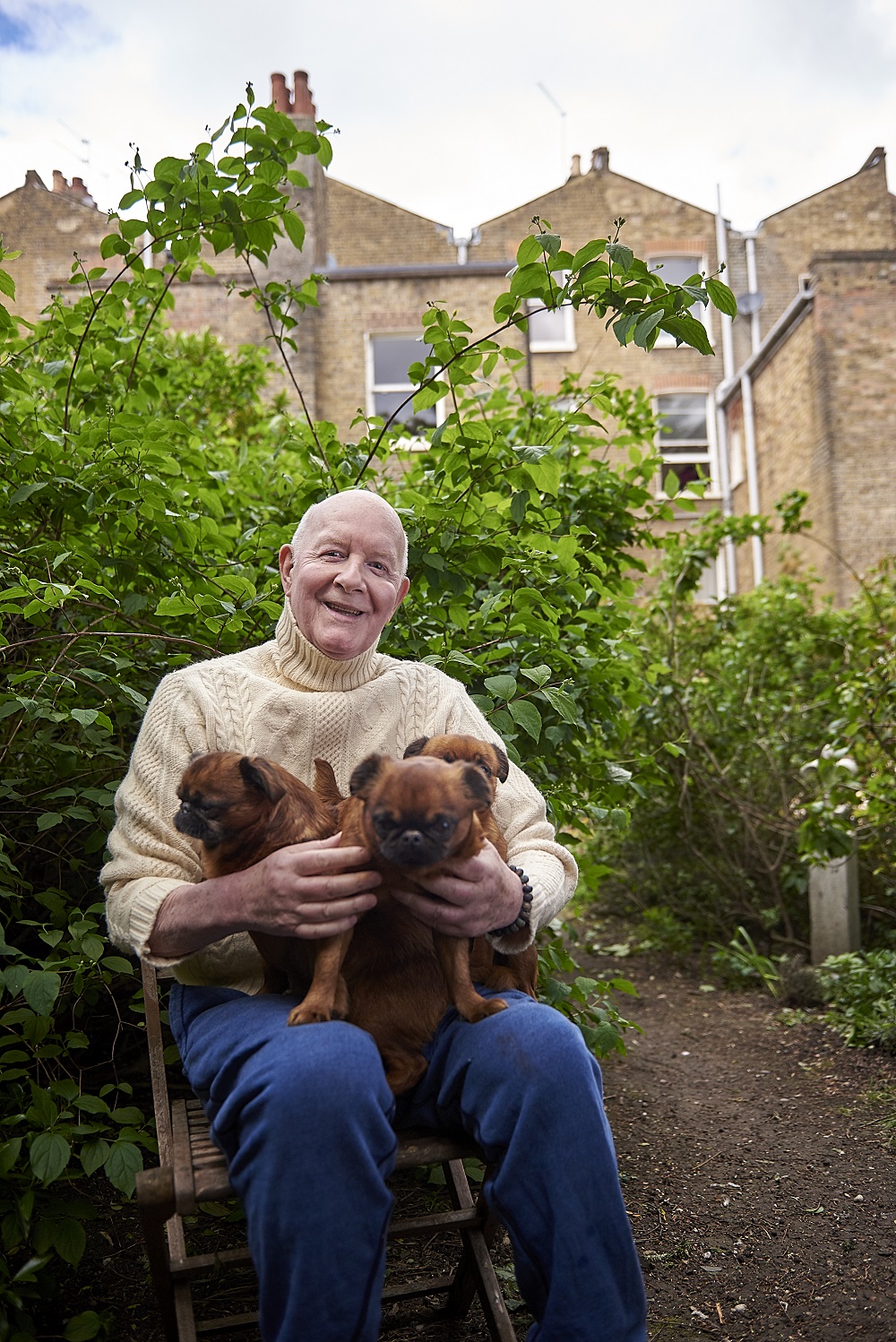The long-term HIV survivor whose partner died in his arms during the height of the AIDS Crisis
Long-term HIV survivor and self-proclaimed 'warrior queen' George Hodson – who has also fought four different cancers – opens up about his loves and losses.

Words: Tom Stichbury; images: Luxxxer
George Hodson opens his front door, and I am greeted by his pride and joy: his three very cute (and very lick-y) Belgian Griffons. Prize-winning pooches, no less. George invites me inside and points out a wall adorned with dog-show rosettes. His other passion is his artwork; he is a talented collagist. “There are many things that I’ve evolved and created to keep myself in equilibrium and not to fall into the abyss,” he says. “To keep going beyond the losses.”
That phrase “keep going” has become a mantra for 70-year-old George, a long-term HIV survivor, who has also fought four different cancers. “I like to call myself the warrior queen,” he grins, before adding soberly: “I live in wretched poverty, I’m very frail and I’m afraid my voice is getting forgotten because, without people like me, there wouldn’t be ART. I know we don’t make cover stories, us old wrinklies, but I encapsulate gay history. I can tell my story and remind our young brothers and sisters.”
And what a story it is. Born into a life of privilege in Maidenhead (albeit it “to wretched parents who were drunks and abusive; luckily, I had a wonderful, wise nanny”), young George ended up being financially cut off by his folks when he went off to study at Goldsmiths in London.
To fund his studies, he became an escort on Half Moon Street, in London’s Westminster. “I’m not advocating whoring, but, for me, it was perfect,” he purrs. “I learnt how to eat a fillet of Dover sole; I learnt about wines; I had good conversations. My gentlemen were mainly quite elderly, so the sex was, kind of, not important. It was just company. I learnt from each one something.”

After finishing university, George climbed the ranks as an advertising copywriter in the capital (“I was being paid huge amounts of money, but I hated it”), before dropping out of the rat race to escape to the gay utopia that was San Francisco: “I did two years there, taking part in a wonderful experiment where we came from all over the world to create something where we could be a majority in a minority… there was this opportunity to be totally queer and there is nothing more lovely than that.”
Indeed, he was soon inducted as an “honorary sister” in the Sisters of Perpetual Indulgence, a queer-led order born in San Fran. “I was called Sister Knickerbocker Glory – I still am!” George chuckles. “We would all gather on a Saturday and Mother Superior would have a Barbie doll; she’d pour water over it and say, ‘We wash away our shame, we wash away our guilt.’ We’d all repeat that and then go f*** ourselves silly in the bathhouses.
“I [also] fell in love with [a guy called] Mark. He was the best f*** – and I’ve had lots of f***s over the years – this man sent me screaming to heaven. He had the most beautiful dick. We moved in together, but it wasn’t meant to be. Sex isn’t enough, unfortunately. I was saucy, I was wild, I flew. I had such a tight upbringing – you’ve got to be well-mannered in a privileged world – now here I was, able to scream and fly, do all the badass things I wasn’t allowed to do before.”
However, a storm was coming, and George has no trouble recollecting exactly when he met the “nemesis”. “I was lollygagging with Mark down to read the latest instalment of Tales of the City in the paper… we’d go to a diner and giggle over it. As we were passing in the Castro, a pharmacy, there was a Polaroid taped to the window; it was a close-up of a man’s arm with this bruised, purple lesion, and underneath it said: ‘If anyone has got this, please report to the Gay Men’s Health Club.’ That was the first time I visually saw anything,” he starts.

“I knew that this what was coming our way, that this was a very dangerous thing. We were hearing stories about a group of men who went to Los Angeles and had an orgy and came back, and a lot of them were beginning to show these signs of KS [Kaposi’s sarcoma] lesions, and it was beginning to be called a ‘gay cancer’.”
While working in a photographic shop, George was visited by a friend who ran the GMHC, who, for educational purposes, wanted to process pictures of men who had died from the disease: “That was my second graphic insight into what could be waiting for me, what could be waiting for all of us. About a month later, I was back in England.”
George barely paused for breath in the UK, as he embarked on a new adventure in Asia, where he crossed paths with his soulmate, Sam. “Ah, yes, to love from death,” he coos. “I was in a gay bar in Bangkok when I noticed this tall, handsome, moustachioed Thai man, who was dressed in a white, buttoned officer’s uniform. I wiggled over, we started talking and we never left each other’s company, until he died, really.”
Together for a “too short” eight years, the pair lived in their own nirvana: “We had this old teak wooden house, with a pool, and I had an orchid garden I created.” Then, one day, they both tested HIV positive.

“A few years later, I developed this lump on my stomach,” George continues. “I realised something was wrong and flew back to London and found myself overnight on the Broderip Ward [at Middlesex Hospital, the first ward dedicated to the care of HIV/Aids patients in the UK] and I had non-Hodgkin’s lymphoma, which was HIV-related. “The man in the bed next to me died in the night. I was away from Sam. I had no work. I had no real friends here. That’s when my hell began.”
Following a fight with the authorities, Sam was able to fly over to be by George’s side. But, as George’s health improved, Sam’s rapidly declined when he went on the AZT [azidothymidine] ‘Concorde’ medical trials; approved in 1987, the drug had terrible side effects: “Within six months, he shrivelled and shrunk from the doses they were giving out.”
George goes on: “He died in my arms in the hospital. The night before, he’d had a huge brain aneurysm, and despite having a ‘Do Not Resuscitate’, this pig of a doctor who I really hate to this day brought him back in a vegetative state.
“I was furious, but it did give me a chance to just lay with him. I tried to get my breath rate in harmony with his, and I told him in his ear: ‘It’s time to go.’ I suddenly realised that people were leaving the room and that he’d stopped breathing. I lay with him and just opened myself up and took him in. I still have him.”

Ahead of our shoot, George picked out a few possessions he wanted to be photographed with; one of them was a silk jacket of Sam’s: “I’ve got some of his old clothes, and I have a huge portrait that a Thai artist did of me and Sam [hanging] over my bed, which I commissioned for his 35th birthday. But the best thing I have of Sam’s is his spirit.”
George (who met Princess Di during his stay on the residential unit at London Lighthouse) confesses he was “very nervous” to tell his story. “I let Jonathan Blake [one of the first people in the UK to be diagnosed with HIV] do it all, bless him, but I think it was time for another voice. He’s not the only long-term survivor in the village,” he laughs.
“We’re getting to the point, with the Aids epidemic, where the younger folk need reminding, lest we forget, that our elders are important and valid, and we must celebrate them.”
As I prepare to leave George’s home – my exposed ankles given one last lick from his Belgian Griffons – he presents me with a framed artwork, which now sits on my bedside table. Long may this warrior queen reign supreme.
Last month (July) George Hodson had to be temporarily rehoused when his basement flat was devastated by flash flooding in London’s Westminster. He lost a lifetime’s worth of possessions and artwork. To support George’s efforts to rebuild his home, please visit his GoFundMe page.

